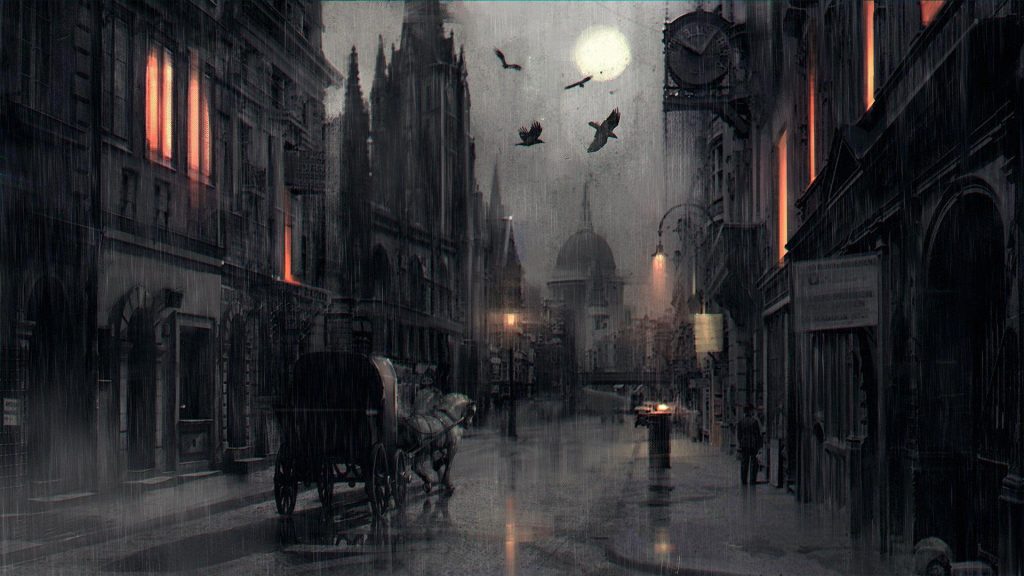Quick Links
Useful Links
- Services
- Privacy Policy
- Terms & Condition
- Contact Us
Get in Touch with Us
- support@dummyEmail.com

“The air smelled like rusted metal, hot stone, and desperation. Under the bridge, the city’s bones were exposed—pipes leaking steam, walls stitched with old wires, and shadows that moved even when nothing was there.” That line doesn’t just paint a picture—it drops you straight into the world Allen “Reign” Odom has created in Sword, Crown, and Quill. A LitRPG fantasy steeped in survival, self-determination, and realism, this novel takes readers far beyond the glimmering heights of magical towers or heroic prophecy. It drags you into the grit—into the Underbridge. The Underbridge isn’t a metaphor. It’s a place. A physical, societal, and emotional pit where the unmarked, the etherless, and the forgotten are pushed to survive. For Malick, the book’s protagonist, it’s the first true test of whether a man without status, resources, or even an identity can carve out meaning in a world built to erase him.
Malick doesn’t land in the Underbridge with a guide or a plan. He arrives after being expelled from a cosmic judgment and labeled as a threat. Alone and wearing a mask that both marks and monitors him, he finds himself at the lowest rung of society—among the dregs. “They called this place the belly of the city. Not because it fed anyone—but because it digested them slowly.” That statement conveys what the Underbridge represents. It’s not just a slum—it’s a place of quiet erasure. The people there aren’t just poor; they’re systemically invisible. And yet, it’s here that Malick begins to understand what survival truly means. In this lower district, ether is scarce, jobs are brutal, and trust is even harder to come by. The world-building here is some of Odom’s finest. Everything from the cracked metal scaffolding to the makeshift dwellings made of scrap Dexmine crates gives the environment a sense of weight and consequence. These aren’t just colorful backdrops—they are the pressure points that shape behavior. One scene highlights the brutal economy of survival in this space: “He traded a half-charged node for a stale protein pack. Not because it was a fair trade, but because it was the trade.”
There’s no fairness in the Underbridge—only desperation, scarcity, and the kind of unspoken code that governs life on the edge. That’s what makes Malick’s evolution here so powerful. He’s not mastering spells or climbing military ranks. He’s learning to breathe in a place designed to choke him. Yet, within this darkness, there’s also resistance. Community. The fragments of people trying to live with dignity despite being labeled disposable. Odom doesn’t romanticize the hardship—but he reveals the layers within it. In one passage, Malick meets a young girl repairing an ether-sensor with scrap wire. “She didn’t look up, just kept working. Her hands were faster than his. More confident. She wasn’t waiting to be saved—she was building something with what little she had left.”
That moment says more than any speech could. In Sword, Crown, and Quill, strength isn’t shown through battles won—it’s in moments like this. Quiet resilience. The determination to fix what others have thrown away. That’s the spirit of the Underbridge. The mask Malick wears—a symbol of punishment fused to his face—also becomes a tool for survival here. It offers scans, warnings, and translations, but more than anything, it forces him to confront who he is without the privilege of choice. “Unauthorized entity. No known classification. Threat level: unstable.”
To the system, Malick is nothing more than an unstable variable. But to the people under the bridge, he’s just another body trying to get by. That equality—born not from acceptance but shared abandonment—becomes the seed of something meaningful. Something that can grow. The Underbridge is more than setting—it’s a crucible. It strips Malick of everything he once relied on: intellect, technology, safety. What remains is what he builds from scratch—skills, relationships, awareness, and eventually, purpose. Allen Odom writes this space not with pity, but with precision. He knows that darkness in fiction doesn’t just mean violence—it means the absence of being seen. And in this absence, characters like Malick must either fade or forge.
What also makes the Underbridge so compelling is how it contrasts with the rest of the city. Above, there are guildhalls, light rails, and vast institutions that rely on ether-powered tools and rituals. Below, there are jury-rigged sensors, smuggled food, and patches of humanity surviving off scraps of power and hope. The division isn’t just economic—it’s spiritual. “Above us, they held sermons about order and purpose. Down here, we held our breath and prayed our walls wouldn’t collapse.” It’s this kind of duality that gives the novel its emotional power. Malick’s journey is not just across geography—it’s through layers of a deeply divided society. And the further he sinks, the more clearly he sees the fractures that define his world.
By the end of his time under the bridge, Malick is not “stronger” in the traditional fantasy sense. He doesn’t emerge with new weapons or mystical allies. But he becomes someone readers believe in—because his strength was earned, not granted.
we’ll send you a nice letter once per week. no spam.
© Copyright 2025 allen odom . All Rights Reserved